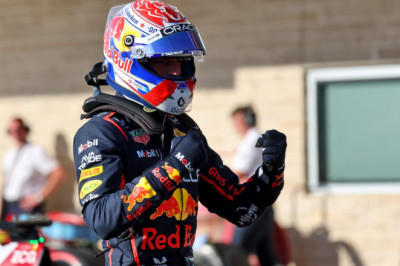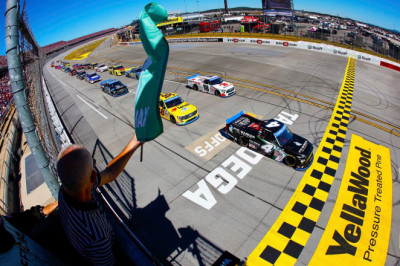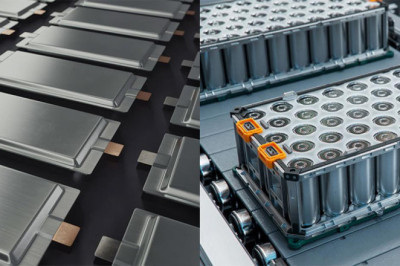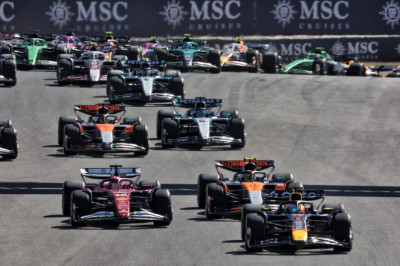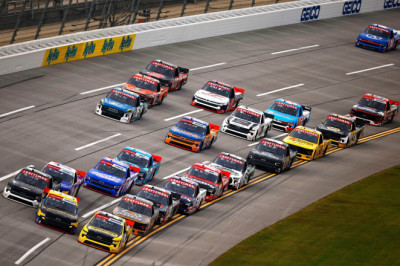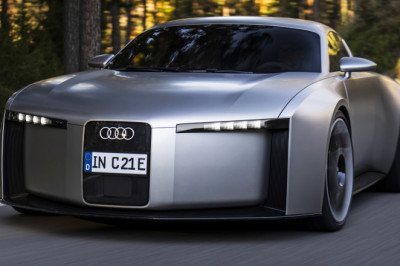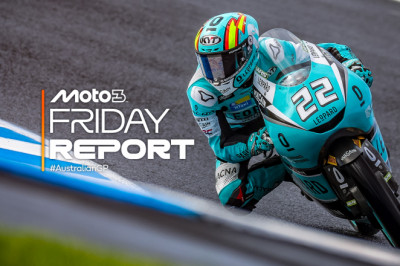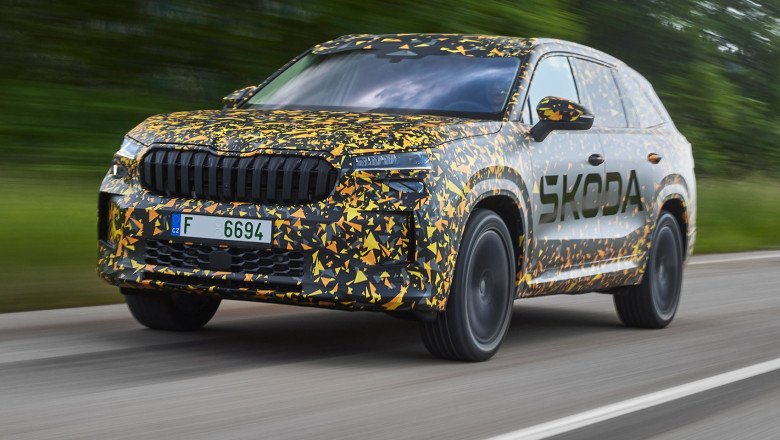
Published:Yesterday 11:39
By Keith Adams
Devout classic Citroen enthusiast, walking car encyclopedia, and long-time contributor to CAR
By Keith Adams
Devout classic Citroen enthusiast, walking car encyclopedia, and long-time contributor to CAR
► Second-generation seven-seat Skoda driven
► Petrol, diesel and PHEV models on sale in 2024
► Sharper handling, better steering, updated tech
It’s going to be a busy 2024 for Skoda. Not only is its electric car range going to expand beyond the oh-so competent Enyaq iV, but its flagship lineup is about to be refreshed – with both the Superb and Kodiaq being replaced by all-new models. On this page you’ll find everything you need to know about the next ‘Skodiaq,’ from powertrain details and spy shots to driving impressions of one of those taped-up prototypes.
It has a lot to live up to. As the first of the K-something-q generation of Skoda SUVs, the Skoda Kodiaq was an important car for its maker. Launched in 2016, it set the style for the entire model range, and since then, more than 800,000 of these seven seaters have been built. Production was centred in the Czech Republic, but Skoda Kodiaqs also rolled out of Ukraine, China, India and – until early 2022 – Russia.
It’s been a moneyspinner for Skoda, and unsurprisingly, the firm is keen not to rock the boat by building something radical or different. And that means electric. For its flagship SUVs, it maintains separation between EV and ICE, with the Enyaq iV supposedly covering off demand for larger electric Skodas.
The final stages of development are now underway, and we were invited along to drive one of those pilot-build cars, as well as chat to the engineers and designers. Some of the final details are still to be confirmed, as well as exactly how the interior will look, but our deep dive means you’ll be armed with all the facts when the new car is finally launched.
From launch, there will be two petrol and two diesel engines. You won’t be surprised to learn that they range from 148bhp to 201bhp – as that corresponds to the outgoing (non vRS outputs). The diesel gets the latest 148-190bhp unit, which debuted in the VW Golf Mk8 and is designed to meet all upcoming emissions regulations. The higher power version will be available with four-wheel drive.
The entry-level petrol is powered by the 1.5 TSI EA211 Evo2 engine developing 148bhp. This is the first Skoda Kodiaq to get mild-hybrid power, which now run on fuel-efficient Miller cycle and feature a variable vane turbocharger. It also features the latest-generation active cylinder technology (ACT+).
Topping the range are 2.0 TSI EA888, which gets four-wheel drive as standard, and the Skoda Kodiaq iV plug-in hybrid. The latter is the first Kodiaq to feature a plug-in hybrid drivetrain and has a claimed 62-mile range on battery. Both models develop 201bhp. Expect the vRS to follow later, sharing the popular Octavia vRS iV’s 242bhp powertrain, and playful (if electronically-generated) V8 rumble.
As you can imagine, we didn’t get a thorough go in the new Kodiaq, but it was enough to get a decent insight into a car still six months from launch. We tried the 148bhp petrol and the 190bhp diesel over a short, smooth, road route with some interesting mountain passes thrown into the equation. Starting with the latter, if you’re jumping out of the old Kodiaq, it feels reassuringly familiar.
The transmission shifter has moved – Mercedes-Benz style – to the steering column, although you twist it like an ID.3’s to drive forwards or reverse. It won’t take long to get used to that, and once underway, the familiarity is maintained thanks to its gruff, gravelly TDI engine note and effortless mid-range torque.
The ride quality initially feels a little firmer – more Volkswagen-like – than before, and the steering has a touch more heft and feel. It’s not the sporting set-up you might expect to find in a SEAT, but it’s a suspension set-up that’s moved Skoda more into the mainstream and away from the comfort end of the spectrum where it resided before.
Where it’s really moved on is in the bends. The body control is much better than before, with more control in the damping and precision mid-corner. It’s not a driver’s car by any stretch of the imagination, but where a challenging set of curves would previously have you backing off or reaching for Sport (on a Drive Mode-specified car), this one tracks smoothly and turns in neatly without too much roll when left in Normal.
The 148bhp petrol doesn’t feel as underpowered as you might imagine in a car of this size. It moves along quite happily and in a refined manner, while the latest generation of DSG seems to shuffle ratios happily and responsively without leaving you with frustrating holes in its power delivery. As always more power equals a happier life a larger SUV, but entry level drivers won’t feel too short-changed here.
We’ve already seen the new Kodiaq in body-in-white form, in spy shots (taken where else but the Nurburgring), and up close in camouflaged form, and that helps guide us to what to expect. And the verdict? It’s no radical departure from what came before, but more of an evolution from VW Group’s increasingly confident and upscale mid-market brand.
As shown in our spy shots and the official pictures supplied by Skoda, the new Kodiaq is slightly less angular and upright than before, but the key features appear not to have changed too much, with something of a Volvo XC60 vibe about them. It looks a little lower and sleeker than before thanks to being 61mm longer than before – and don’t be surprised to see more premium-style external lighting and trim jewellery, as you do with the Enyaq iV.
Oliver Stefani, Head of Skoda Design, said: ‘We have taken the essence of our characteristic Skoda SUV design language to the next level and sharpened it even further. On top of that we have implemented a new interior concept featuring a clever combination of manual and digital controls for an even more intuitive and comfortable driving experience.’
Much of the interior of the cars we drove was covered by black tape, we did get to see the new 10.25-inch digital instrument cluster, shapelier seats, and other details. Sadly, the 12.9-inch central screen was covered over, but if it’s as usable as the Enyaq’s (without the glitches) it should be very good. You can expect a sleeker, higher-quality interior, though, and don’t be surprised to find extensive use of fabrics on the dash and a choice of lighter, more tactile trims, giving it a more (dare we say it) premium feel than before.
Then there’s that new transmission selector. The main benefit is to free up more space in the centre console, where you now get more cubby space, and the option of a double-decker, cooled, mobile phone wireless charging bay.
The wheelbase is unchanged from before, but there are signs there’s more intelligent use of the interior space. So, the central row of seats can now be more forwards and backwards, freeing up space for those in the rear. Jumping in, even at its furthest forward, there’s a reasonable amount of room in the middle row. As for the boot, that’s grown – and is up to 910 litres from 835 (in the five-seat model).
The next-generation Skoda Kodiaq will roll off Skoda’s Kvasiny production line alongside the Karoq from the beginning of 2024. The first pilot production vehicles are already being produced, and while the current model is built alongside the Superb, but the next-generation of that model will be moving to Bratislava. This will free up production capacity for more Kodiaqs and Karoqs. People do love their SUVs.
Expect to see the new Kodiaq hit UK showrooms around late spring 2024. The model range is expected to start from around £35,000, with the vRS range-topper joining the line-up later from £50,000.
A solid effort from Skoda, and proof that the firm really knows its customers. It’s more practical inside, is packed with more storage cubbies and space for the family, while being a sharper drive for the more enthusiast minded. The seven seater version is more adaptable than ever, while the updated interior should make it even easier to live with than before.
We’ll wait until we’ve seen the undisguised car before calling it on the interior and exterior design, but given the brand’s current direction, don’t be surprised to see it ramp up in the desirability stakes. The addition of a plug-in hybrid version also cements its status as one to have if you’re looking to get a Kodiaq on the company – or live in town and have access to cheap domestic electricity.
Seven seats in something so small? How does that work?
Third-generation Ford Kuga tested in hybrid guise
Volkswagen puts its proven and popular plug-in powertrain...
By Keith Adams
Devout classic Citroen enthusiast, walking car encyclopedia, and long-time contributor to CAR






